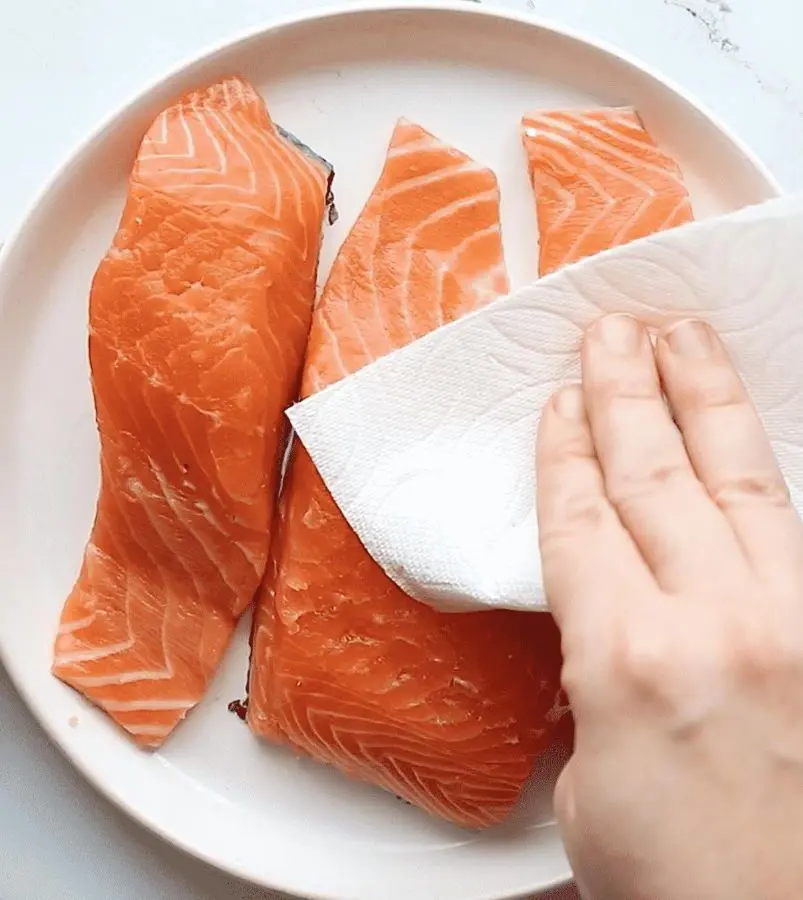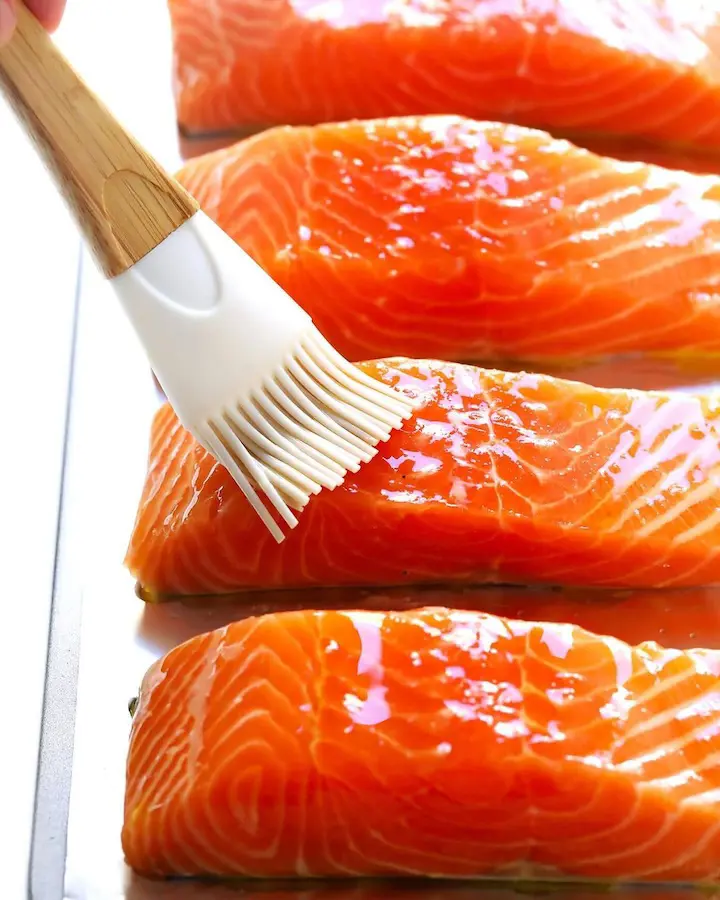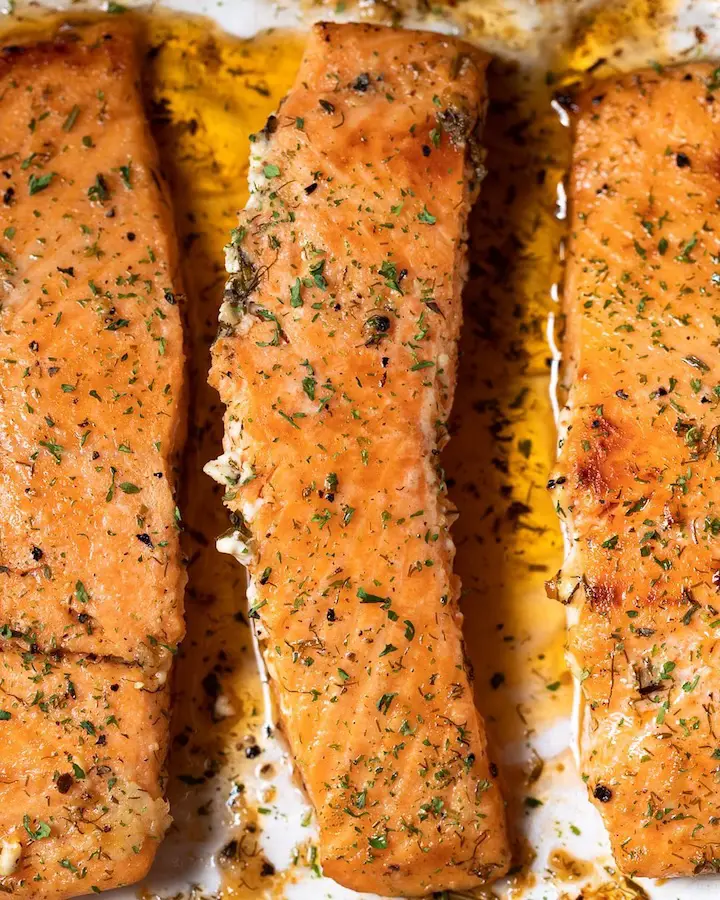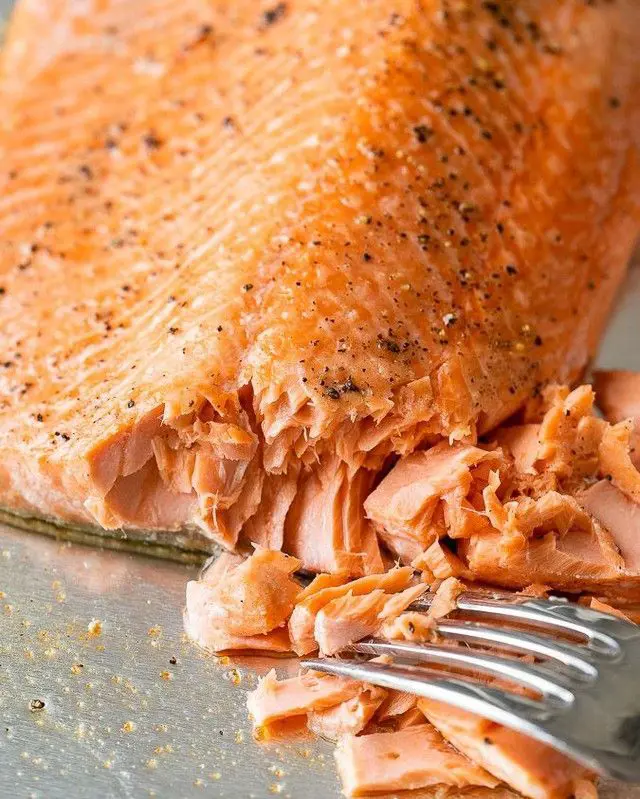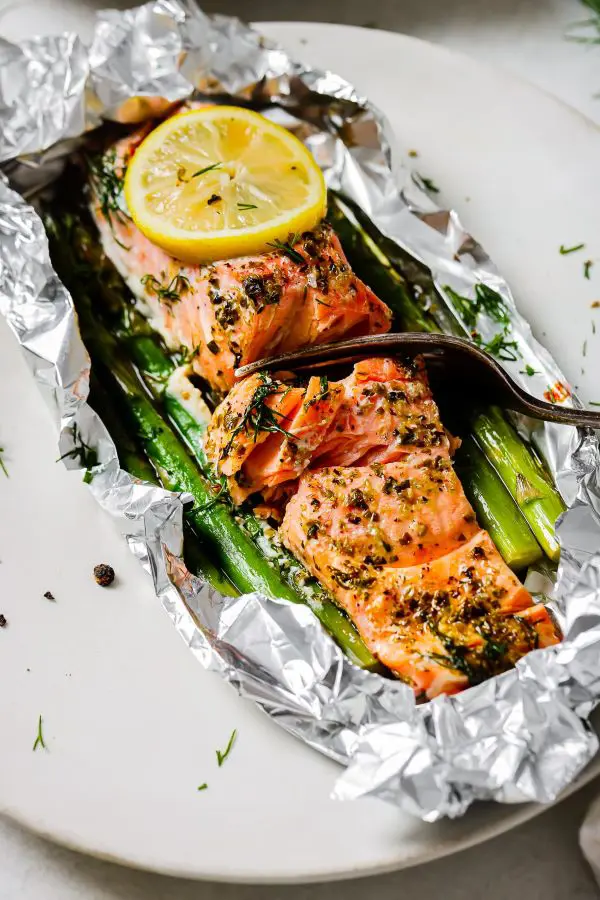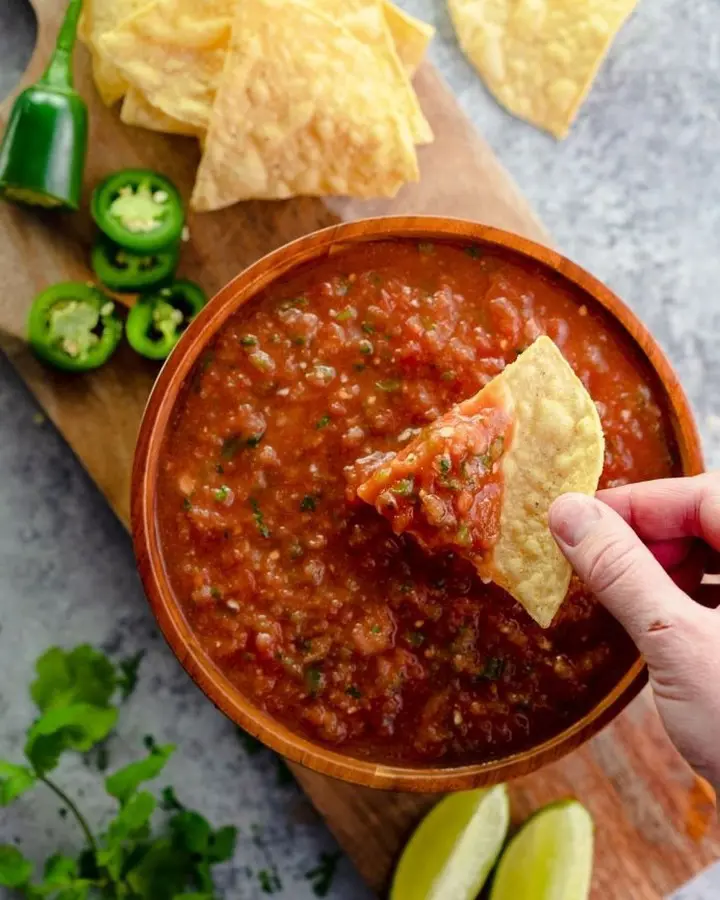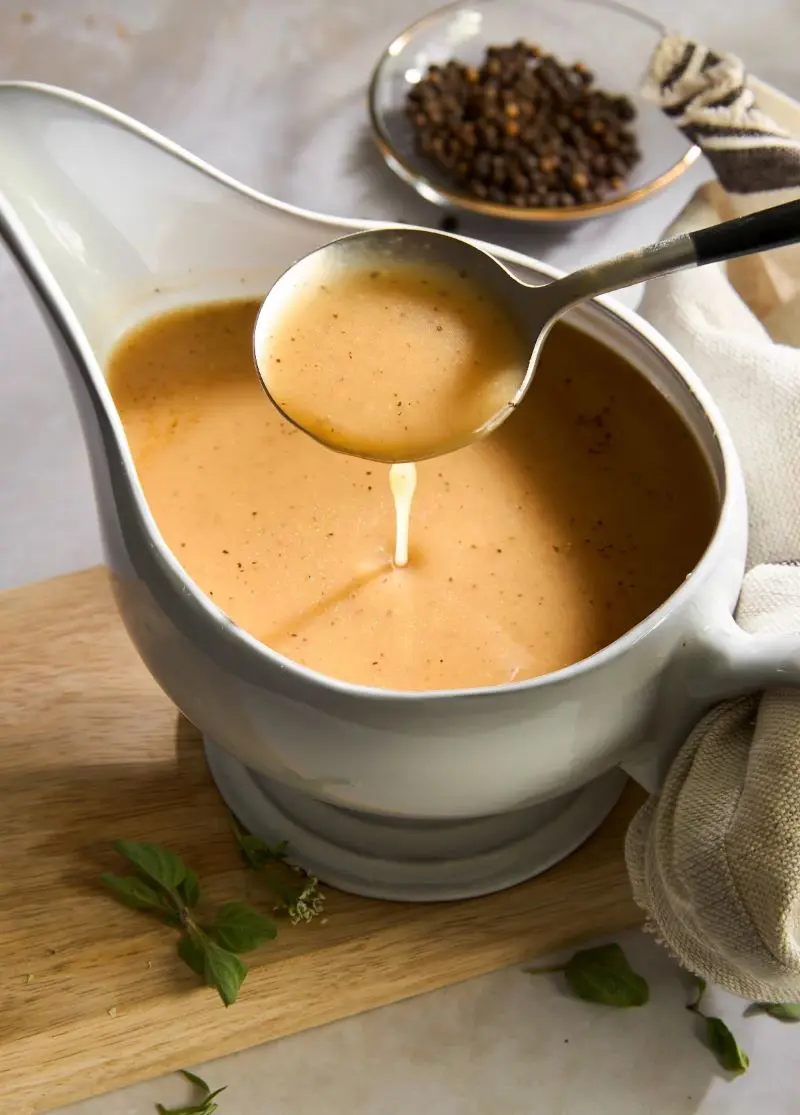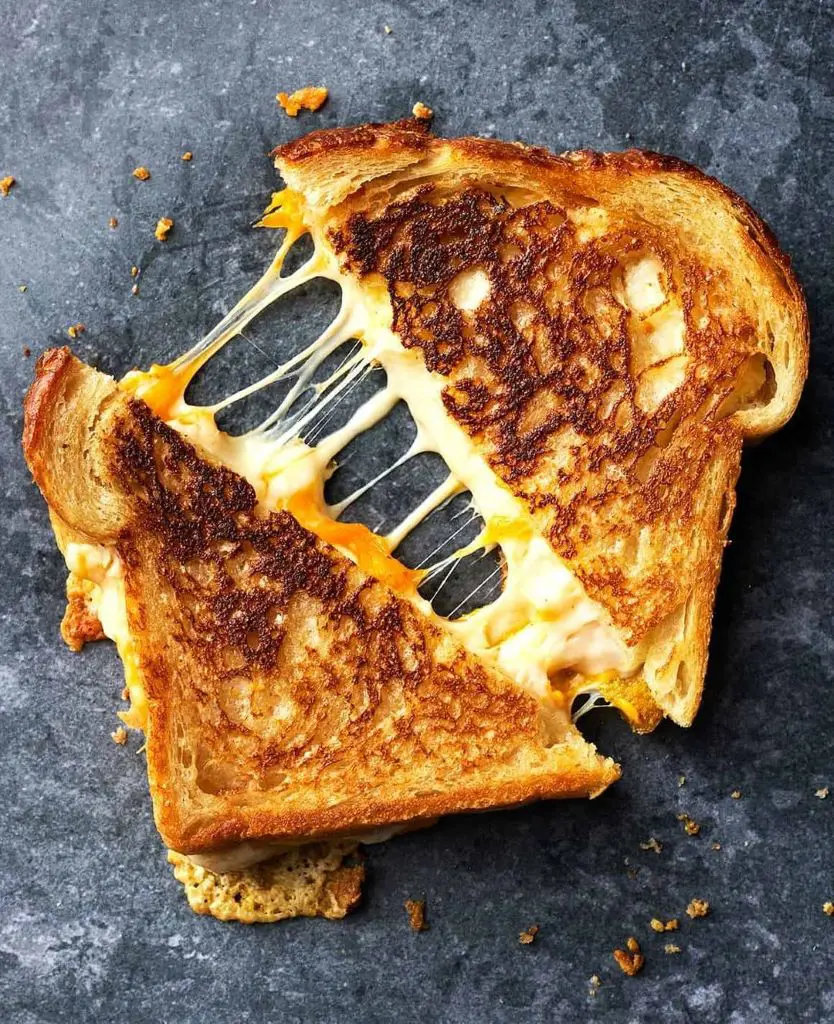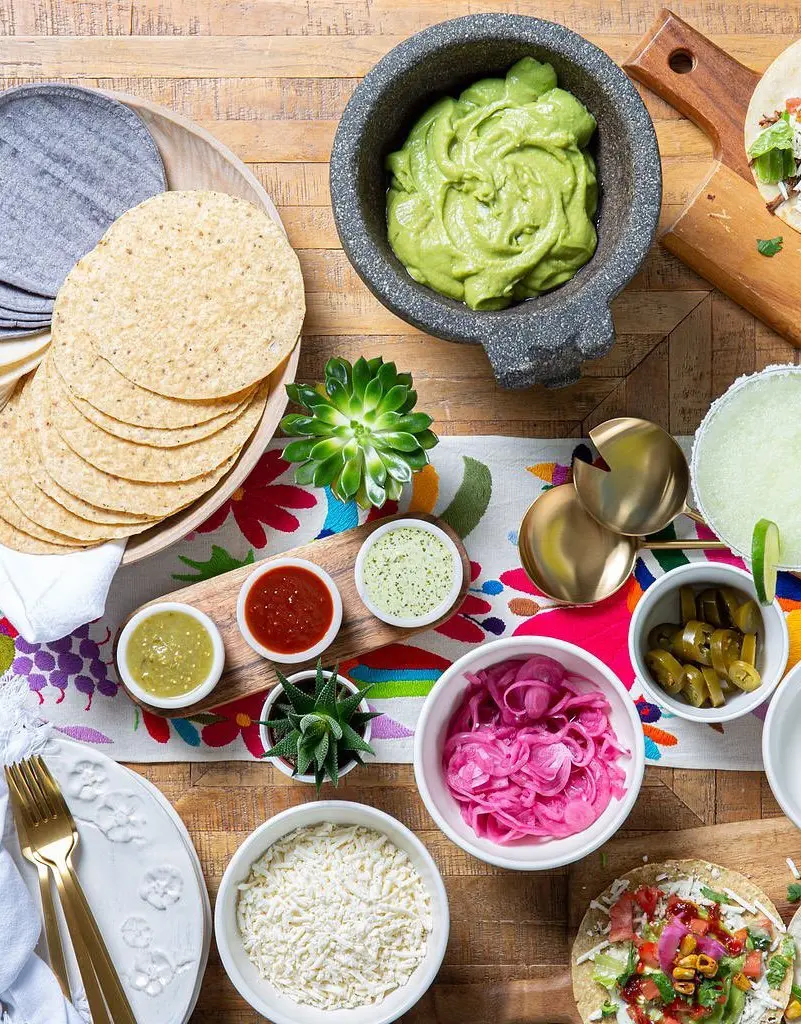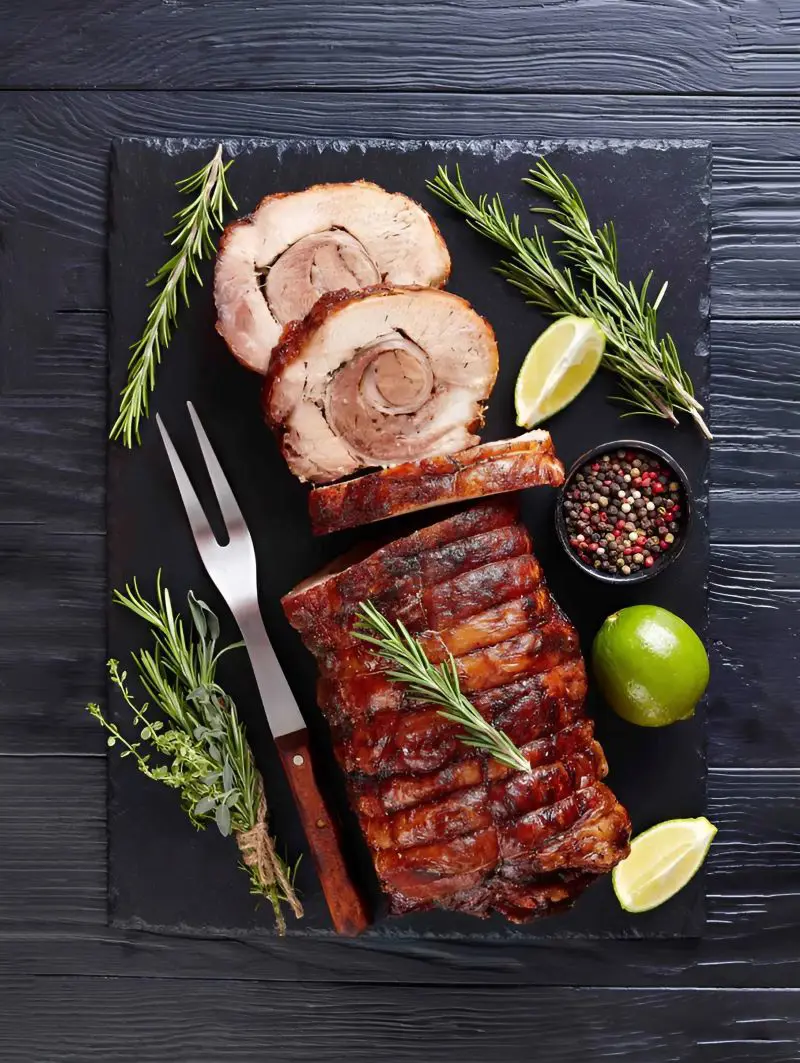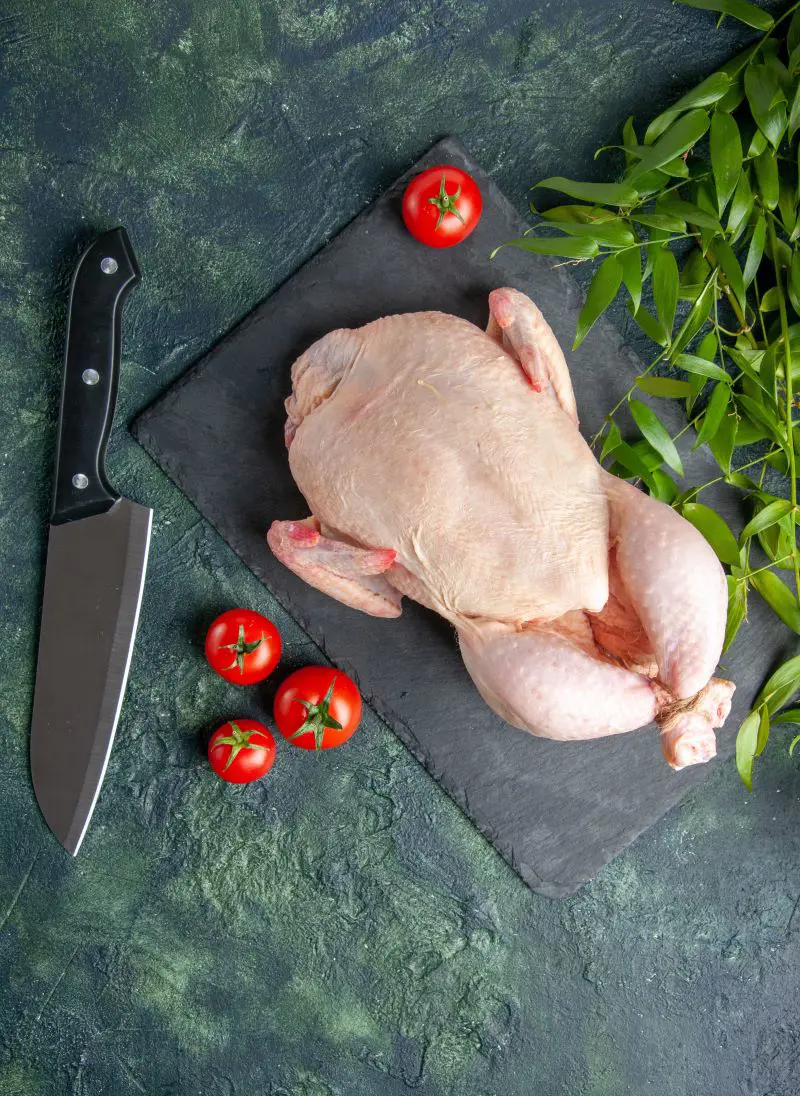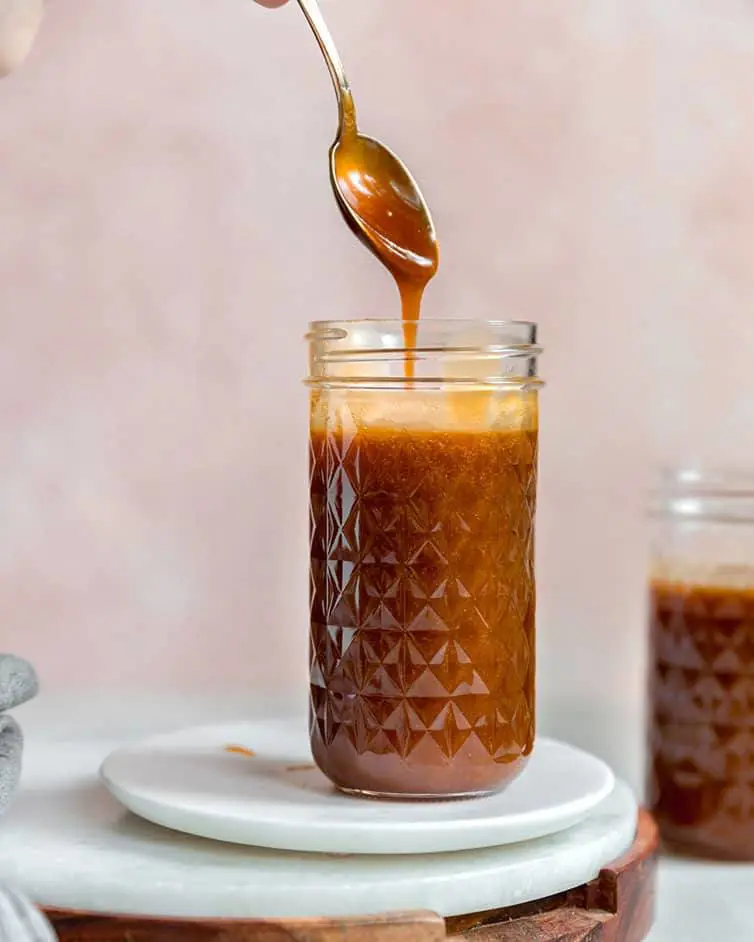Ingredients You Will Need
This baked salmon recipe really is easy. All you need is a fresh lemon butter sauce that goes on top of the salmon. The ingredients you need are:
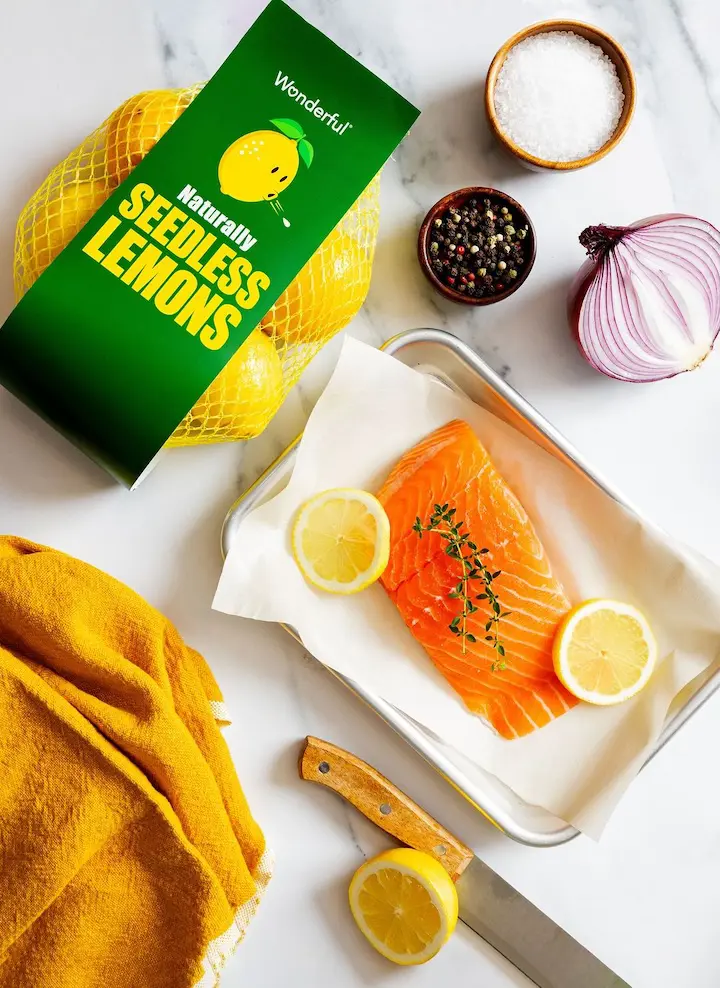
- Salmon: We prefer salmon fillets that are light pink and fresh. You could also go with frozen fillets without any freezer burns. This recipe also works for larger pieces.
- Butter: Everything tastes better with butter. It adds a buttery taste to the fish and also adds moisture. Replace it with olive oil or any other vegetable oil if you like.
- Lemon Juice: Salmon and lemon is a match made in heaven. You can either bake it alongside the salmon in the baking tray or use it to make a sauce that goes over the fish like in this recipe. A single medium-sized lemon works fine but you can use more if you want to enhance the tangy flavor.
- Salt and Pepper: Salt and pepper to taste because who likes their meals bland anyway?
- Herbs: You can choose from a number of fresh herbs but we use chopped parsley and dill for this recipe. It complements the salmon.
- Garlic: Mince 2 or 3 of your own garlic to add to the salmon.

